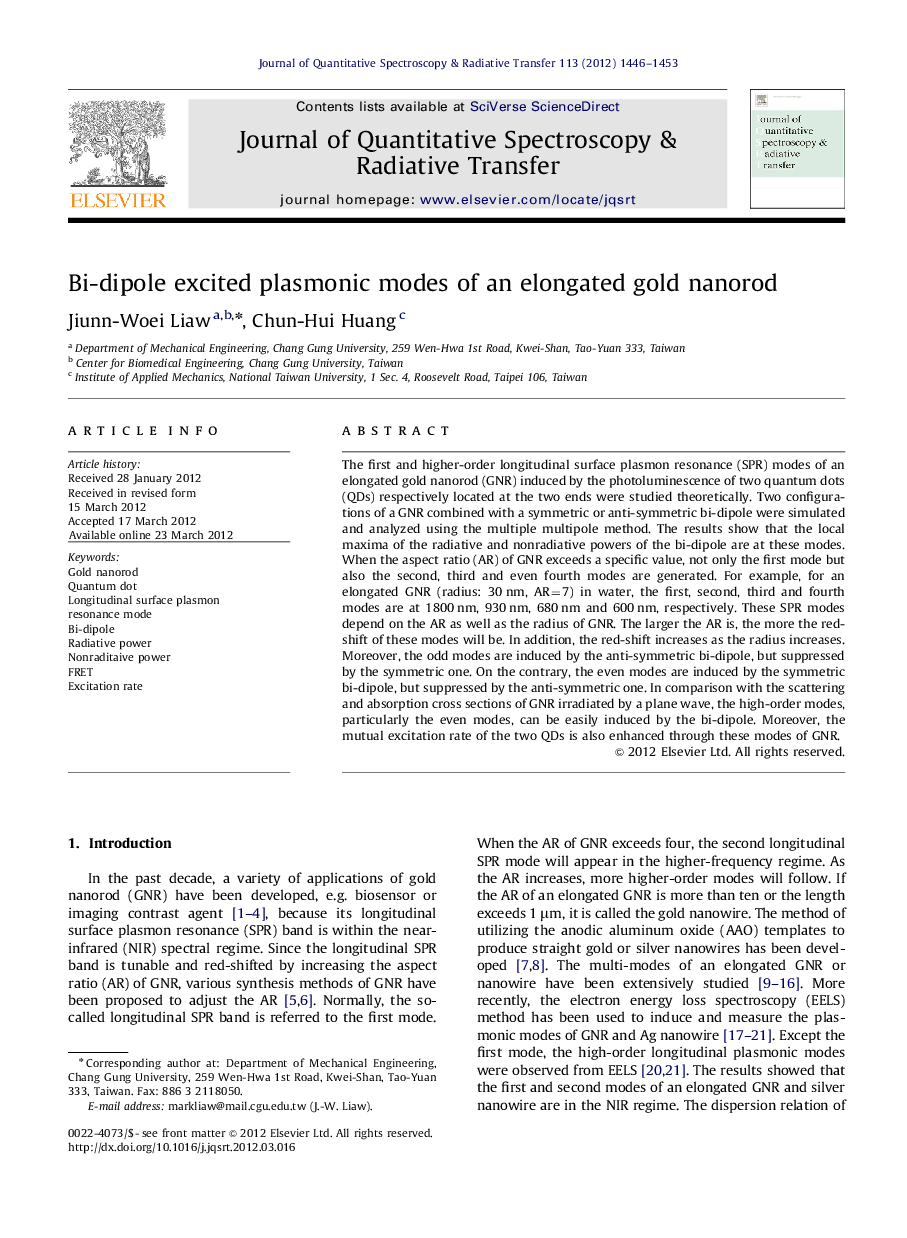| Article ID | Journal | Published Year | Pages | File Type |
|---|---|---|---|---|
| 5429343 | Journal of Quantitative Spectroscopy and Radiative Transfer | 2012 | 8 Pages |
The first and higher-order longitudinal surface plasmon resonance (SPR) modes of an elongated gold nanorod (GNR) induced by the photoluminescence of two quantum dots (QDs) respectively located at the two ends were studied theoretically. Two configurations of a GNR combined with a symmetric or anti-symmetric bi-dipole were simulated and analyzed using the multiple multipole method. The results show that the local maxima of the radiative and nonradiative powers of the bi-dipole are at these modes. When the aspect ratio (AR) of GNR exceeds a specific value, not only the first mode but also the second, third and even fourth modes are generated. For example, for an elongated GNR (radius: 30Â nm, AR=7) in water, the first, second, third and fourth modes are at 1800Â nm, 930Â nm, 680Â nm and 600Â nm, respectively. These SPR modes depend on the AR as well as the radius of GNR. The larger the AR is, the more the red-shift of these modes will be. In addition, the red-shift increases as the radius increases. Moreover, the odd modes are induced by the anti-symmetric bi-dipole, but suppressed by the symmetric one. On the contrary, the even modes are induced by the symmetric bi-dipole, but suppressed by the anti-symmetric one. In comparison with the scattering and absorption cross sections of GNR irradiated by a plane wave, the high-order modes, particularly the even modes, can be easily induced by the bi-dipole. Moreover, the mutual excitation rate of the two QDs is also enhanced through these modes of GNR.
⺠First and high-order longitudinal surface plasmon resonance modes of a gold nanorod induced by two quantum dots were studied. ⺠Two cases of a GNR combined with a symmetric or anti-symmetric bi-dipole were analyzed. ⺠Mutual excitation rate of the two QDs is enhanced through these modes of GNR.
